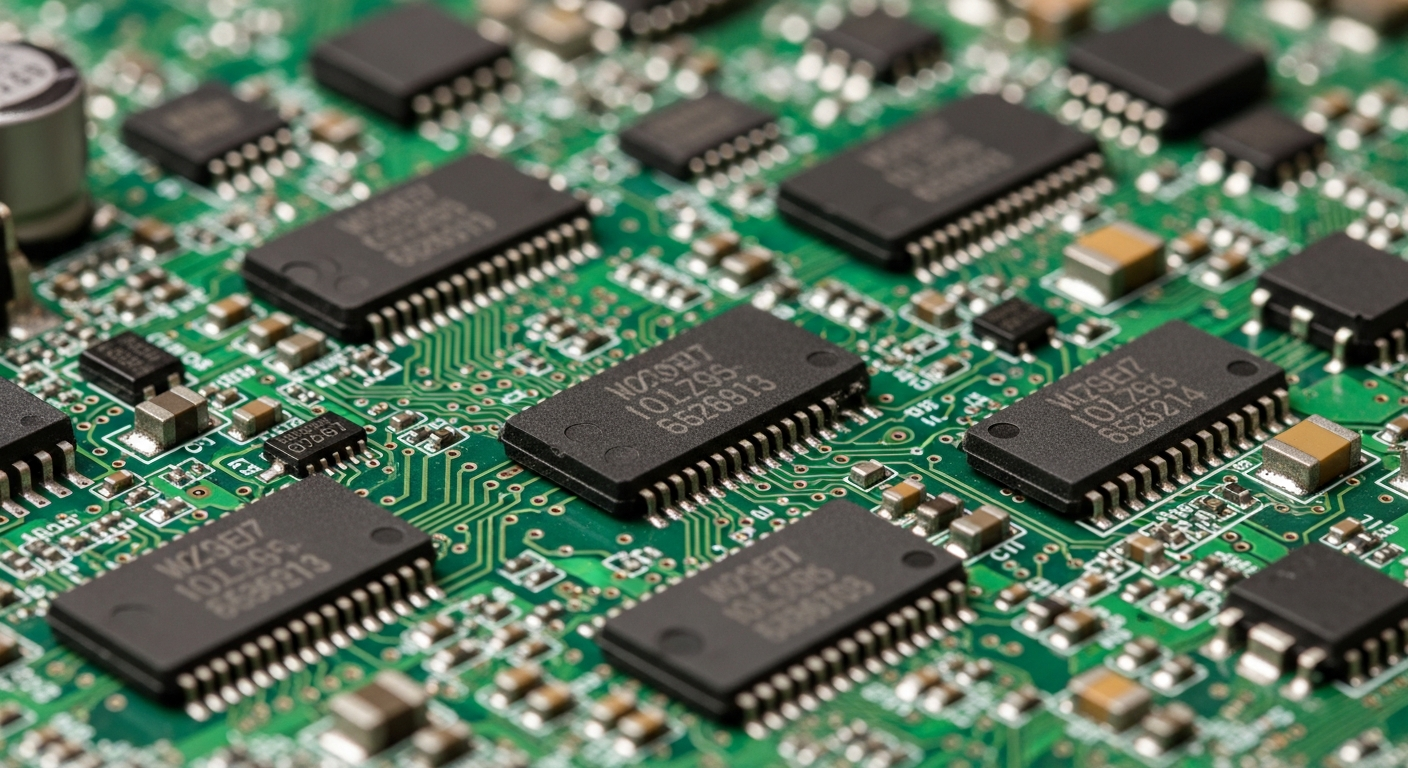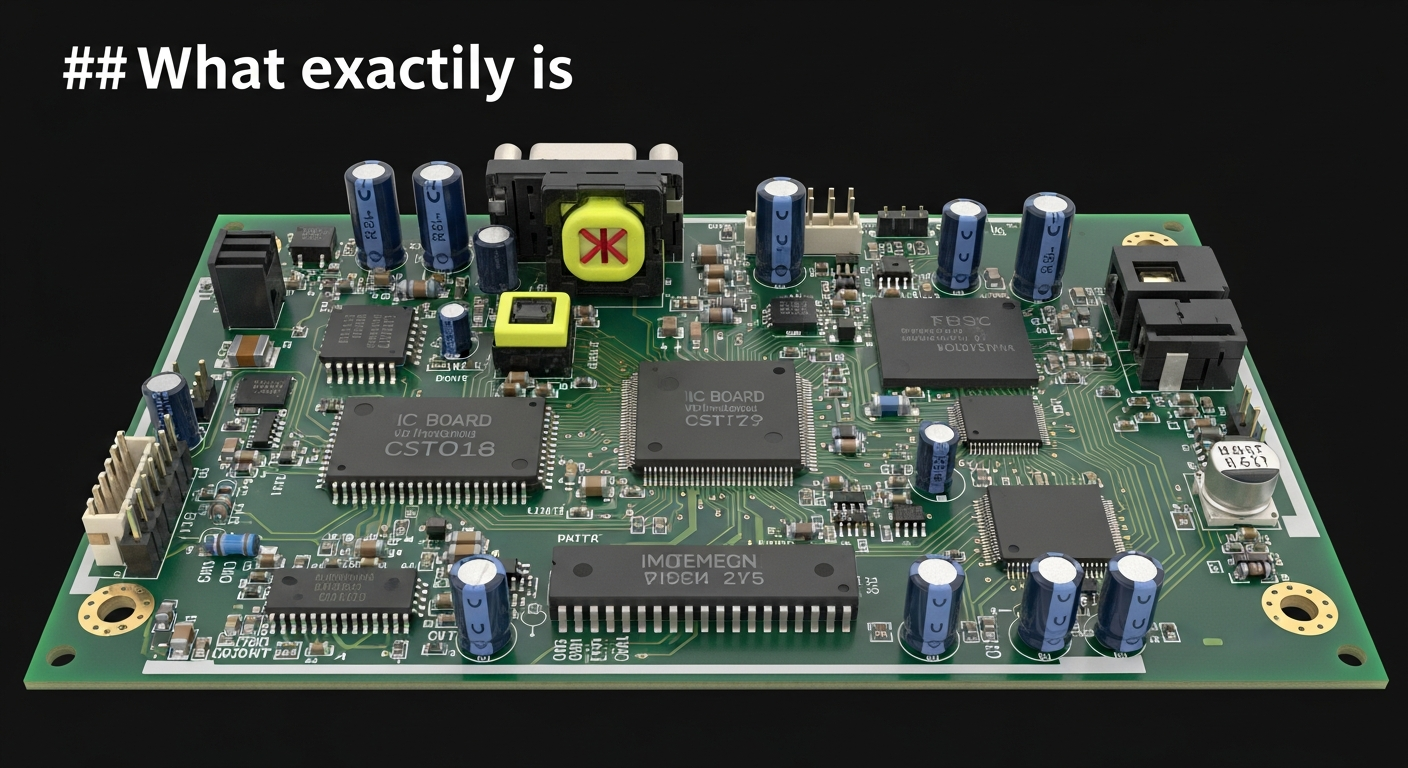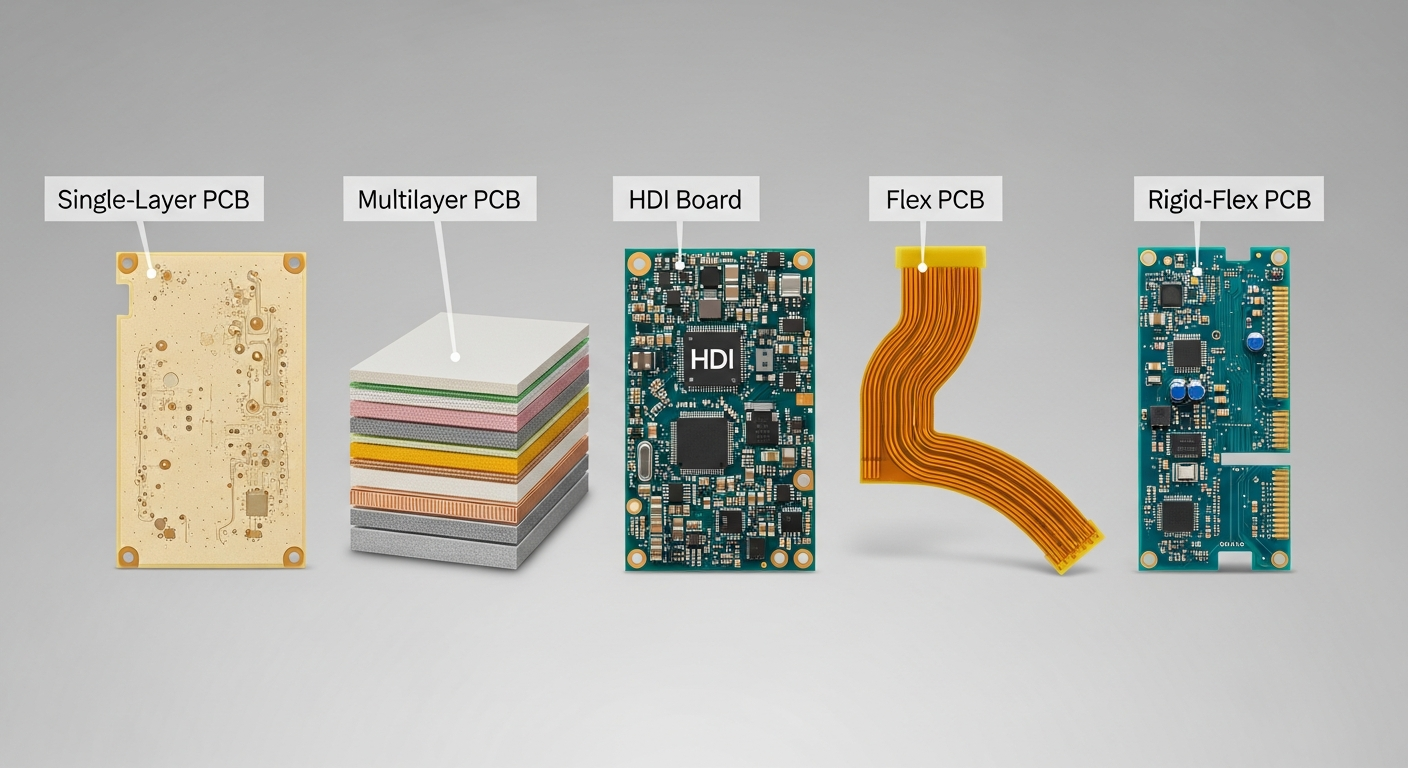An IC board is a printed circuit board designed to hold, connect, and support integrated circuits. It provides electrical pathways, mechanical support, and thermal stability for chips used in modern electronic products.

IC boards form the foundation of digital and analog systems. They enable compact layouts, stable signal transmission, and reliable long-term operation across consumer, industrial, medical, and IoT applications.
What exactly is an IC board?
Many electronic systems rely on complex chips, and these chips require a dedicated platform for power, grounding, and signal routing.
An IC board is a PCB that hosts integrated circuits, offering structured wiring, component mounting pads, power distribution, and controlled impedance routing for stable chip performance.

Deeper Insight
An IC board integrates chips such as microcontrollers, memory modules, power ICs, RF modules, or ASICs. It uses copper layers to carry signals and power to and from each IC pin. The board may be single-layer, multilayer, HDI, flex, or rigid-flex depending on complexity.
Common design elements include:
- Via structures (through-hole, blind, buried, microvia)
- Controlled-impedance differential pairs
- Ground planes and power islands
- Decoupling networks
- Thermal management features
Manufacturers review Gerber, BOM, and chip placement to ensure reliable assembly. CAM engineers evaluate pad sizes, solder mask openings, and trace length matching for high-speed interfaces. These steps help prevent issues such as signal distortion, overheating, or soldering defects.
For B2B clients building IoT modules, industrial controllers, or sensor systems, a well-designed IC board ensures predictable performance from prototype to mass production.
What materials are commonly used for IC boards?
Different circuits need specific electrical, thermal, and mechanical characteristics.
IC boards use FR4, high-Tg laminates, polyimide, or low-loss RF materials depending on performance requirements.

Deeper Insight
Common material categories include:
FR4 (Standard Epoxy-Glass)
- Cost-effective
- Good for general control boards and consumer products
High-Tg FR4
- Higher thermal stability
- Suitable for power electronics and industrial systems
Polyimide for Flex / Rigid-Flex
- Durable for bending environments
- Common in wearables, cameras, and compact modules
Low-Loss RF Laminates (Rogers, Panasonic, Isola)
- Low Dk/Df
- Used for RF, 5G, high-frequency IoT, radar systems
Manufacturers match material properties with chip requirements: dielectric constant for impedance, Tg for soldering temperature, and CTE for thermal cycling reliability. These decisions directly impact product performance and long-term durability.
What types of IC boards exist?
Different applications demand different board structures and technology levels.
IC boards include single-layer PCBs, multilayer PCBs, HDI boards, flex PCBs, and rigid-flex PCBs to support chips of varying complexity.

Deeper Insight
1. Single-Layer IC Boards
- Simple circuits
- Suitable for low-cost products such as small controllers or basic sensor boards
2. Multilayer IC Boards (4–20 Layers)
- Provide stable power planes and signal layers
- Used for advanced microcontrollers, CPUs, and communication modules
3. HDI IC Boards
- Microvias, fine traces, stacked vias
- Required for BGA, QFN, and fine-pitch ICs
4. Flex IC Boards
- Thin, bendable structures
- Ideal for wearables, cameras, and battery interconnects
5. Rigid-Flex IC Boards
- Combine rigid strength with bendable routing
- Used in aerospace, robotics, and compact industrial devices
Manufacturers evaluate via aspect ratios, copper thickness, thermal zones, and IPC-related tolerances to ensure each board type meets performance targets.
What components are commonly mounted on IC boards?
IC boards host both active and passive electronic components required for a complete circuit.
Typical IC board components include microcontrollers, memory chips, power ICs, RF modules, analog ICs, sensors, and supporting passive elements such as resistors and capacitors.

Deeper Insight
Key component groups include:
- Microcontrollers (MCUs) for logic control
- Power management ICs for voltage regulation
- RF transceivers for wireless communication
- Memory ICs such as Flash or SDRAM
- Operational amplifiers for analog processing
- Sensors for IoT and industrial measurement
- Passives to filter noise and stabilize signals
- Connectors for I/O and external interfaces
Manufacturers use SMT and DIP processes to assemble components. AOI, X-ray, ICT, and FCT testing verify assembly quality and functional performance. Engineering teams manage BOM alternatives when shortages occur, helping maintain stable production schedules.
How does the design of an IC board affect product performance?
A well-designed IC board can significantly improve signal integrity, thermal stability, and system reliability.
IC board design influences speed, power efficiency, noise control, heat dissipation, mechanical durability, and production yield.

Deeper Insight
Performance factors include:
1. Signal Integrity
- Trace width, spacing, impedance control
- Via placement, length matching for high-speed interfaces
2. Power Integrity
- Decoupling strategies
- Power plane layout
- Current handling capability
3. Thermal Management
- Copper thickness
- Thermal vias
- Heat-spreading zones
4. Manufacturability
- Component spacing
- Soldering profiles
- Clearance for assembly tools
5. Mechanical Reliability
- Board thickness
- Shock and vibration tolerance
- Connector reinforcement
Manufacturers use DFM reviews, CAM adjustments, and test feedback to refine the layout before production. For B2B clients developing industrial equipment or IoT hardware, these improvements reduce field failures and strengthen long-term stability.
Conclusion
An IC board is the essential platform that supports integrated circuits in modern electronic products. It defines electrical routing, power delivery, thermal behavior, and overall system reliability. By selecting suitable materials, using the right PCB structure, and applying professional design rules, engineers create IC boards that deliver consistent performance from prototype to mass production. With strong engineering evaluation and precise manufacturing control, IC boards provide the foundation for dependable and scalable electronics across industrial, consumer, and IoT applications.

